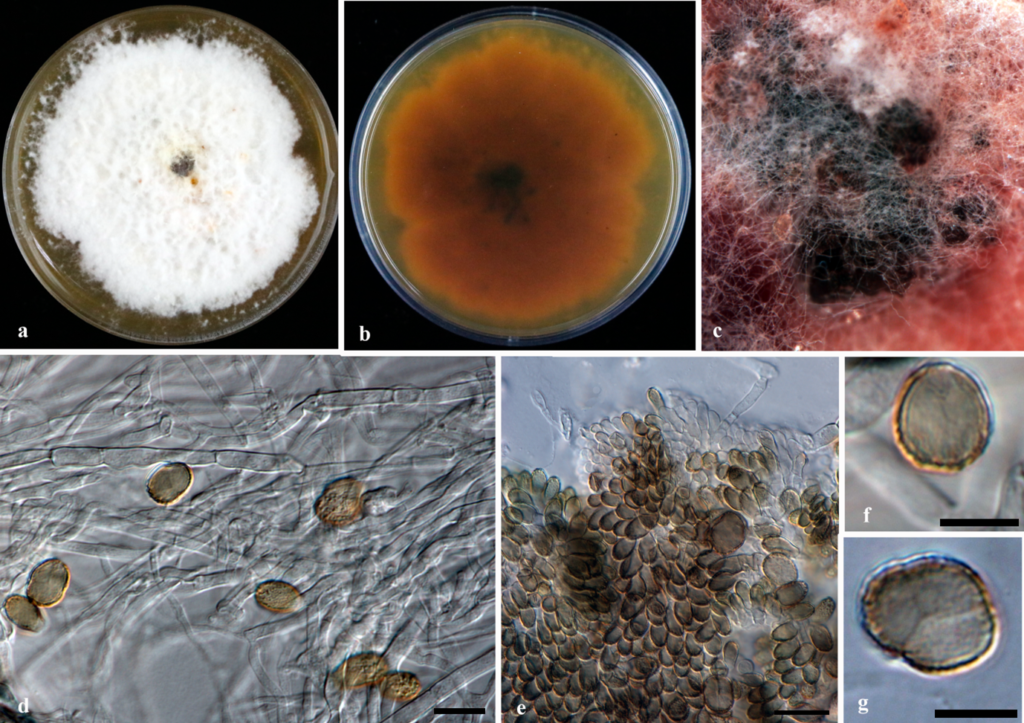Epicoccum astragali W. Zhao, Q. Ning, & J.Y. Yan, sp. nov.
MycoBank number: MB 558420; Index Fungorum number: IF 558420; Facesoffungi number: FoF 10792;
Description : Asexual morph: Conidiomata sporodochial, solitary or aggregated, immersed to semi-immersed, glabrous, covered with hyphal growth, blackish brown. Hyphae smooth, branched, septate, hyaline. Chlamydospores multicellular, produced in agar, hyaline to pale brown. subglobose or oblong. Conidia multicellular, pale brown to dark brown, globose to subglobose, 8–15×7–11 μm(x̅ =11.0×8.6 μm,n = 50). Sexual morph: not observed.
Cultural characteristics – Colonies on PDA are slow growing, covering a 30 mm Petri dish in 10 days after incubation at 25 ± 1 °C, white (surface) and yellow brown (reverse), with a dense mat of mycelium, rough, later give yellowish-brown to red colour to the PDA media.
Material examined: China, Henan Province, Luoshan City, from Astragalus sinicus leaves (Fabaceae), May 2018, Zhao Wensheng and Zhang Guozhen (JZBH 380085, holotype), ex-type living culture = JZB 380085.
Distribution: China
Notes: The new strain fits well into the generic concept of Epicoccum in Didymellaceae. Epicoccum astragali is described herein as a new species based on multi-gene analysis of LSU, ITS, rpb2, and tub markers. The phylogenetic tree shows a moderately supported sister-clade relationship (Fig: 5) with E. italicum (CGMCC 318361, LC8151) (81% ML support). Epicoccum astragali differs from E. italicum by having smaller conidia (11×8.6 μm in E. astragali compared to 12.5–28 diam. in E. italicum). Furthermore, E. italicum produces conidia with a basal cell, which we could not observe in E. astragali.

Fig. x. Epicoccum astragali (JZBH 380085, holotype) a, b. Colony on PDA, 10 days after incubation at 25 ± 1 °C (a from above, b from below). c. Pycnidia on PDA medium d. Sporodochia e-g. Conidia. Scale bars: d-g= 10 µm.
